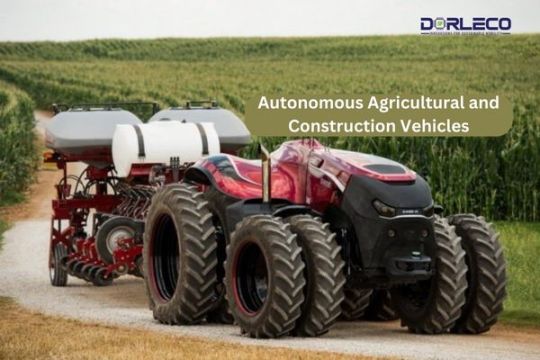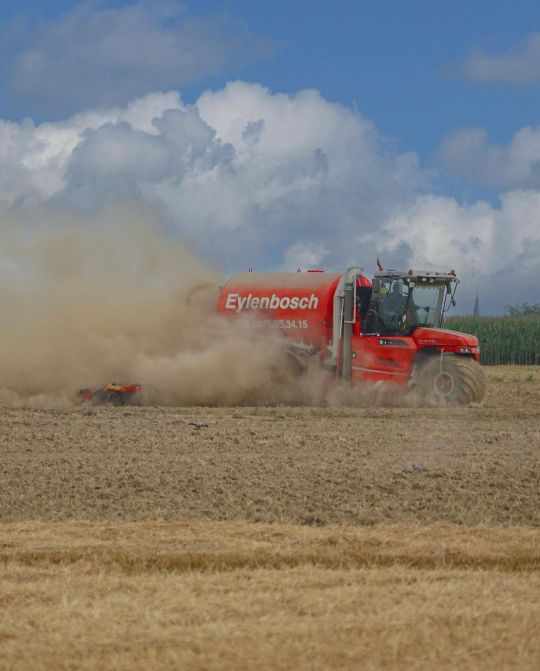#agriculturalvehicles
Explore tagged Tumblr posts
Text
DIETHYLENE TRIAMINE (DETA) 111-40-0
Product introduction N,N-dimethyl aniline CAS: 121-69-7 nature Light yellow to light brown oily liquid, flammable, with pungent odor. Soluble in ethanol, chloroform, ether and aromatic organic solvents, slightly soluble in water. It decomposes when heated and releases toxic ammonia oxide fumes. Application field It is used as a catalyst for producing polyurethane foam in combination with organotin compounds. It is also used as rubber vulcanization accelerator, raw material for explosives and medicine. It is one of the basic raw materials for the production of basic dyes (triphenylmethane dyes, etc.) and basic dyes. The main varieties are basic bright yellow, basic purple 5BN, basic magenta green, basic lake blue, brilliant red 5GN, Brilliant blue etc. N, N-dimethylaniline is used in the pharmaceutical industry to manufacture cephalosporin V, sulfa-b-oxopyrimidine, sulfa-dimethoxine, fluopyrimidine, etc., and in the spice industry to manufacture vanillin, etc. Construction description N,N-dimethyl aniline CAS 121-69-7 EINECS 204-493-5 Chemical formula C8H11N Molecular weight 121.18 InChI InChI=1/C8H11N/c1-9(2)8-6-4-3-5-7-8/h3-7H,1-2H3/p+1 Density 0.956 g/mL at 25 °C (lit.) Melting point 1.5-2.5 °C (lit.) Boiling point 193-194 °C (lit.) Flash point 158°F Water solubility 1 g/L (20 ºC) Vapor pressure 2 mm Hg (25 °C) Vapor density 3 (vs air) Solubility 1.2g/l Refractive index n20/D 1.557(lit.) Acidity coefficient 5.15 (at 25℃) Storage and transportation Packing:according to the clients requirement Storage: Store in dry, dark and ventilated place. Company Information MIT-IVY INDUSTRY CO.,LTD is a manufacturer and exporter of fine chemical dyes & pharmaceutical intermediates in China. Mainly produce aniline series products and chlorine series products. MIT –IVY Chemicals Industry Co.,Ltd. is a leading manufacturerof chemical for 21 years with complete production equipment and meticulous management and maintenance of machinery. We use advanced production technology and test methods to realize production, quality controlling to meet the standard. We have been approved by SGS, ISO9001, ISO140 01, GB/HS16949 and T28001. Mit-Ivy main products include as the following: API, pharmaceutical intermediates ,Dye intermediates, fine,speciality chemicals,Waterborne industrial paint and new energy materials. Our main markets includes America, India, Africa, Indonesia, Turkey, South-east Asia, West Asia and so on. MIT-IVY Industry Main products shares 97% of the domestic market specializing in the production and management, We can supply the products with more competitive cost. with premium quality and price and welcome to consult. Our company has professional persons who major in chemical R&D and sicentific management, supply fine chemical products with high quality and close service, also supply custom-tailored products according to our clients’ requirement. We have a positive and self-motivated management work team with a common philosophy, caring and commitment through teamwork, our team strive to achieve success in delighting our clients and ourselves. we continuously innovate our products and improve our service, sales network. Hence, we initiate the first sale mode on net in China, which is the retail trade of small package bring along wholesale of diversified management modes. Our products are exported widely to South Korea, Vietnam, Australia, Europe and South America, highly recommended by our clients. We insist on the management creed “Market is our compass, Quality is our life, Credit is our soul”. Clients’ trust is our forward powder, their satisfaction is our struggling goal. Brand Customer Service: Our JIT customer service account team network in China develop and implement tailor-made concepts for the optimum supply of our customers with industrial and specialty chemicals. Your advantages: ● Centralized customer service supports simplification of administrative procedures, resulting in time and cost saving. ● Our Chinese network and sophisticated logistics solutions ensure that chemicals of identical quality are supplied to customers with several manufacturing locations and contribute to security in planning and reliability of processes. ● Our processes are continuously optimized and adapted to our customers’ changing structures and requirements. Superiority of Chemistry Logistics service: Chemical logistic service is very professional and should be superior under UN regularity, especially for DGR Class series. We provide a special-purpose solution to optimize logistic and suitable packing group and labeling service for our principals. Our main Chinese ports with DGR chemical warehouses are to operate specialty chemical and apply all relative paperwork concerned. Our distribution capabilities include: ● Flexible deliveries, intelligent solutions ● Anything from bulk shipments of thousands of tonnes down to the smallest shipment of packed goods and even samples. ● Bulk – storage and transport of powders and liquids – movement of goods in ships – powders and bulk liquids ● Pharma, feed and food storage to accredited standards ● Segregated materials by business unit and hazard classification ● Temperature controlled storage and transport ● Effective cost control ● Re-packing, drum filling, bagging, ripping and tipping ● Customer delivery KPI's on delivery fulfillment performance If you are interested in getting more quotations, please add WHATSAPP:0086-13805212761 or E-MAIL:[email protected] FAQ Q. Are you factory or trading company? A. We are a factory located in XUZHOU city, JIANGSU province, China . Q. Are all colors are same price? A.No, the price are different depend on the texture, availability, Ingredients and So on. Q. Can you provide samples for quality checking before placing an order? A. Samples are available upon request, but the shipping cost should be paid by customer. Q. Is there a discount? A. The discount will be given by the quantity. Q. How about delivery time? A. About 7-15 days after payment confirmed. Q. What kind of payment terms you can accept? A. We accept T/T, LC, Western Union and Paypal. Read the full article
#Acrylicdecorativefinishpaint#Acrylicprimer#acrylicrawmaterialcar2ktopcolorpaint#Acrylicundersideall-in-onepaint#agriculturalvehicles#Alkydmixedpaint#anticlimbpaint#australiapaint#CarPaint#Chinacarpaint#Chinanon-stickpaint#Chinapaint#Chinapaintcolourants#Chinapaintglasscoatingpaint#Chinarussiapaint#Chinaspraypaint#Chinatoymodelpaint#colourchartsteelgatepaint#environmentalfriendly#Environmentallyfriendlysingle-componentself-dryingtopcoat.safe#Epoxy#freesample#glosscoating#hightemperatureresistantwaterpaint#mainsteelgatepaint#paintcolourants#scratchremoverreevesacrylicpaint#shadecardsnewmodelgatepaint#stableandreliableperformance#surfacedecorationofsteelstructurebuildingsandworkshops
0 notes
Text
Autonomous Agricultural and Construction Vehicles
October 31, 2023
by dorleco
with no comment
Autonomous Vehicle Technology
Edit

Introduction
A major technological leap in farming and building is represented by Autonomous Agricultural and Construction Vehicles. These cars can function with little assistance from humans because of their sophisticated sensors, GPS, and artificial intelligence systems. This article introduces these cutting-edge devices, summarizing their salient characteristics, advantages, and possible drawbacks of Autonomous Agricultural and Construction Vehicles.
Important Characteristics of Self-Driving Construction and Agricultural Equipment
Technology of Perception and Sensors: Autonomous cars can sense their surroundings thanks to a variety of sensors installed in them, including GPS, LiDAR, radar, and cameras. These sensors give the car real-time information about its surroundings, which aids with navigation and decision-making.
Artificial Intelligence (AI): AI systems analyze the sensor data and decide how to maneuver the vehicle, carry out tasks, and avoid obstacles. Over time, the vehicle’s decision-making abilities are frequently enhanced through the use of computer vision and machine learning.
GPS and Mapping: Accurate navigation requires high-precision GPS devices. Digital maps of the work area are frequently pre-programmed onto vehicles, enabling them to follow predetermined paths and carry out duties with remarkable accuracy.

Remote Monitoring and Control: A lot of self-driving cars come with features that let their operators monitor and manage operations from a distance. This function improves safety and enables on-the-fly modifications in real time.
Interoperability: Autonomous vehicles can interact with other farm equipment and management systems in an agricultural setting to enable coordinated activities like planting, harvesting, and irrigation.
Safety Features: Safety is a top priority in the design of autonomous cars. To avoid collisions, they frequently have emergency stop systems and collision avoidance systems.
Advantages of Autonomous Agricultural and Construction Vehicles
The construction and agricultural industries stand to gain greatly from the many benefits that autonomous cars provide. The following are some of the main benefits:
Enhanced Productivity: Because autonomous cars can operate nonstop, they can accomplish tasks more quickly and with more efficiency. This is especially helpful in agriculture, where crop output depends on timely tasks like planting and harvesting.
Precision and Consistency: These vehicles follow predetermined routes and carry out jobs consistently, operating with a high degree of precision. Increased crop productivity, higher-quality building, and more efficient use of resources are all possible outcomes of this precision.
Cost Savings: Since autonomous cars require fewer human operators, labor costs may be lower in the long run. They use less fuel and resources because they run more effectively.
Operational Efficiency: Using information from sensors and AI algorithms, autonomous cars may instantly modify their course and optimize their routes. This flexibility leads to less waste and more effective use of resources.
Safety: Autonomous vehicles in the construction industry can carry out dangerous operations, such as excavation and demolition, without endangering human operators. They can lessen the physical strain on employees and assist in preventing field accidents in agriculture.
24/7 Operation: Since autonomous vehicles don’t need to sleep or take breaks, they can operate around the clock. This is especially useful at the most important times of the agricultural cycle.
Reduced Environmental Impact: By using resources like water and fertilizers more effectively, autonomous agricultural vehicles can lessen their negative effects on the environment and increase sustainability. Waste in construction can be decreased by optimizing resource use.
Data Gathering and Analysis: A multitude of data regarding the environment, agricultural conditions, and building sites can be gathered by these vehicles. To improve operations, long-term planning, and decision-making, this data can be evaluated.

Disadvantages of Autonomous Agricultural and Construction Vehicles
Although autonomous Agricultural and Construction Vehicles have many benefits, there are a number of drawbacks and difficulties that must be taken into account when putting this technology into practice. The following are some of the main drawbacks:
High Initial Costs: The acquisition and assimilation of self-driving cars and related technologies might be costly, potentially impeding their widespread use, particularly in small and medium-sized enterprises.
Maintenance and Repairs: Because autonomous cars are intricate machinery, they occasionally need professional personnel for repairs in addition to routine maintenance. When compared to conventional vehicles or equipment, maintenance expenses may be higher.
Liability and Legal Issues: Determining who is responsible for accidents or mistakes involving self-driving cars might be complicated, necessitating modifications to existing legal frameworks. It might be difficult to navigate the legal and regulatory environment.
Data security: A lot of data, including environmental and mapping data, is gathered and sent by autonomous cars. To stop misuse, hacking, or theft, it is essential to protect the security and privacy of this data.

Job Displacement: In industries where labor has historically been needed, the use of autonomous cars may result in employment displacement. It will be difficult to manage the social and economic effects of this relocation.
Technological Restrictions: Because autonomous cars rely on a variety of sensors and technology, they could have trouble operating in inclement weather, dimly lit areas, or challenging terrain. Restrictions imposed by technology may hinder their performance.
Human Oversight and Intervention: The ability of autonomous cars to function fully independently may be limited if they still need human supervision to manage difficult or unexpected scenarios.
Adaptation and Training: To properly operate, monitor, and maintain autonomous vehicles, personnel and operators may need to complete training. It may require some time and effort to become used to this new technology.
Conclusion:
In conclusion, autonomous agricultural and construction vehicles represent a transformative leap forward in the fields of farming and construction. These vehicles offer a wide array of benefits, including increased productivity, precision, cost savings, and enhanced safety. They have the potential to revolutionize the way we approach tasks in these industries, making them more efficient, sustainable, and safe.
However, their adoption is not without challenges. High initial costs, regulatory complexities, maintenance requirements, and potential job displacement are factors that must be carefully considered. These challenges emphasize the need for a strategic approach to implementation and a focus on long-term planning.
Despite these challenges, the advantages of autonomous vehicles cannot be overlooked. As technology continues to advance and regulations catch up, the integration of autonomous agricultural and construction vehicles is likely to become more widespread. The key will be to balance the advantages with the disadvantages and mitigate potential risks effectively.
In the coming years, as technology evolves and becomes more accessible, autonomous agricultural and construction vehicles have the potential to drive significant improvements in efficiency, safety, and sustainability, ultimately benefiting both businesses and the broader society. It is a promising path towards a future where we achieve more with less, while also ensuring that our agricultural and construction industries remain competitive and environmentally responsible.
#Autonomouscontrols#Agriculturalvehicles#ConstructionVehicles#selfdrivingcars#KeylessEntry#Cybersecurity#StartSystems#dorleco#controlsystem#ADAS#eMobilityControls#AVRescueProtocols#automotive#controlunit
0 notes
Link
youtube
#Community#Query#Vehicle#Car#Bike#ThreeWheeler#Buy&Sell#AgriculturalVehicles#ConstructionVehicles#Question#AutoMartz#Automobile#Automotive
0 notes
Photo

🚜 VERVAET HYDRO TRIKE XL slurry spreader 📸 Steenokkerzeel 🗓️ 2018/07/19 #photographedbyhermanwalraet© #hewapic© #slurryspreader #slurry #spreader #vervaet #hydro #trike #hydrotrike #eylenbosch #steenokkerzeel #mest #mestverspreider #agriculture #landbouw #tractor #tractors #akker #velden #summer #zomer #field #agriculturalvehicles #vehicle (bij Steenokkerzeel) https://www.instagram.com/p/CkdL115oThQ/?igshid=NGJjMDIxMWI=
#photographedbyhermanwalraet©#hewapic©#slurryspreader#slurry#spreader#vervaet#hydro#trike#hydrotrike#eylenbosch#steenokkerzeel#mest#mestverspreider#agriculture#landbouw#tractor#tractors#akker#velden#summer#zomer#field#agriculturalvehicles#vehicle
0 notes
Text
Waterborne Concrete Floor Paint Coating Solvent-free Epoxy Transparent Top Coat Paints for Garage Floor
Product introduction Description Water based, matt, court and floor paint. Application Areas Tennis court. Mineral surface. Foot traffic areas; hall, corridor, warehouse, carpark etc. Ensures perfect integration with the substrate without cracking, blistering and flacking. Excellent adhesion and hiding power capacity. Resistant to atmospheric conditions. Do not discoloration and yellowing. Advantages Surface Preparation Application surfaces should be dry, oil-free and clean. Application Paint should be diluted with water in the ratio of 1/1 and applied as a primer. Then paint should be applied for second and third coats with diluted 10% water. Roller or brush should be used for application. Minimum 6 hours curing needed for each coat. Surface and ambient temperature should be between +5°C and +30°C. Consumption 0,400 kg / m² for two layers. Package 20 kg plastic bucket. Storage and Shelf Life Shelf life is 2 years in a cool place by protecting against frost and direct sun light in its unopened package. Product Application 1.Durable Moisture and Chemical Resistant Film 2.Low Odor 3.Low VOC and HAPs Free 4.Formaldehyde Free 5.Quick Dry 6.Quick Stack Time 7.Excellent Film Building Properties 8.Excellent Flow and Leveling 9.Minimum Grain Raise 10.Resists Yellowing 11.Meets KCMA Performance Requirements, When Applied to Manufacturer’s Specifications 12.24 Hour Pot Life-Can Be Re-Catalyzed Once Recommended use for storage tanks, rail transportation, functional vehicles, power facilities, transformers, distribution cabinets, machinery and equipment such as high anti-corrosion and decorative coating. Details Details Technical parameters Drying time (25'℃) Surface drying 1 hour Hands-on 24 hours Drying 1 hour (60-80°C) Fully cured 7 days Gloss ≥80% (60°) Film hardness H Paint film adhesion level 4 Paint film flexibility 2mm Impact resistance of paint film 50cm-kg Artificial aging resistance 1000h Methods of application The first step is to apply MyCover as a primer sealer so that later MySealant 2K, as a two-component water-based polyurethane varnish, creates the perfect protective film. You must wait 4 hours after the application of MyCover. MySealant 2K is applied on the microcement coating in two layers and the drying time between layers is from 8 to 24 hours, depending on environmental conditions and taking into account that humidity delays drying. After the first layer, the surface should be sanded with a 400 grit sander, while the final layer does not require any sanding. It should not be applied in environments with a temperature that is below 15ºC and for optimal results it is advisable to apply it at temperatures ranging between 18 and 24ºC. The polyurethane varnish can be applied with a fiber roller or gun. Advantages 1.Very low VOC levels (Volatile Organic Compounds), being less aggresive to the environment and the painter 2.Provides highs resistance to corrosion with over 400 hours in salt spray and humid chamber tests Construction description Ingredients A, B two components Mixing ratio 3:1 (weight ratio) Mixing method: Mix component A thoroughly, add component B and continue mixing until smooth. Coating thickness Dry film thickness 20 μ m Wet film thickness 50 μ m Maturing period (25℃) 10-15min Service period (25°C) 3h Re-coating interval 12h minimum 4Bh maximum Maintenance When directly applied on the surface of the primer, the primer shall be polished, clean, dry, free of rust and oil stains. When coated on the surface of the primer, the primer surface should be clean, dry and free of dirt. Use conditions Construction temperature 10-35 ℃, mixing degree 30-75%, good ventilation conditions. Notes - Do not clean the surface with chemical products or cleaners that contain abrasive substances. The use of bleach and detergents is especially contraindicated. - Clean the coating with water and MyCleaner or neutral soap - Do not cover the microcement sealant until two weeks have passed since the application - Before wetting it, it is necessary to let the polyurethane varnish dry for at least one week. Keep in mind that the fullness of its chemical properties is achieved after two weeks. Recommended Paint System 2 coats of Maydos transparent putty for patching imperfection 1 coat of Maydos water-based wood varnish primer 2 coats of Maydos water-based wood finish Clean up: Clean all equipment with clean water immediately after use Storage:Store in cool(temperature range 5℃-45℃), dry and well-ventilated place and keep it out ofthe reach of children Preparation and Application 1. Before application, stir the paint completely and evenly, filter and then wait until bubbles disappear. 2. The painted surface with PU, NC paint etc must be sanded completely to make it matte and then clean the sanding scrap. The application should be done evenly and do not apply too thick for one time. 3. If the wood has been applied solvent-based primer, then at least two weeks should be given to let it dry completely. 4. The wood surface must be dry, clean, strong and free of contaminants. Sand it with sanding paper (320#) in the same direction as wood grain. Fill the holes and cracks in the wood with transparent putty. 5. Apply 1-2 coats of putty on the treated wood. The recoat time is 2 hours and it is better to sand each coat with sand paper (400#). If the wood is very coarse, then more coats are suggested. 6. Dilute primer with 10-20% clean water and 2-3 coats are suggested. The recoat time is 3-4 hours and sand the first coat with sand paper (600#) and (800#) for the rest. 7. Dilute finish with 10-20% clean water and 2-3 coats are suggested. The recoat time is 4-5 hours and sand it lightly with sand paper (800-1000#). Good Remind 1. For better application experiences, please complement with other Maydos products. 2. Application environmental condition (above 8°C and relative humidity below 85%). 3. The dilution water quantity varies from temperature and humidity. More water at low temperature and high humidity, and less at high temperature and low humidity. 4. Prevent the paint film from wetting and don’t put wet things on it before it is dry. Recoat time varies from the weather. 5. Under normal condition, the maintenance period of paint film is one week, but it should be longer in case of low humidity and thick paint film. FAQ Q. Are you factory or trading company? A. We are a factory located in Fuan city, Fujian province, China . Q. Are all colors are same price? A.No, the price are different depend on the texture, availability, Ingredients and So on. Q. Can you provide samples for quality checking before placing an order? A. Samples are available upon request, but the shipping cost should be paid by customer. Q. Is there a discount? A. The discount will be given by the quantity. Q. How about delivery time? A. About 7-15 days after payment confirmed. Q. What kind of payment terms you can accept? A. We accept T/T, LC, Western Union and Paypal. Read the full article
#Acrylicdecorativefinishpaint#Acrylicprimer#acrylicrawmaterialcar2ktopcolorpaint#Acrylicundersideall-in-onepaint#agriculturalvehicles#Alkydmixedpaint#anticlimbpaint#australiapaint#CarPaint#Chinacarpaint#Chinanon-stickpaint#Chinapaint#Chinapaintcolourants#Chinapaintglasscoatingpaint#Chinarussiapaint#Chinaspraypaint#Chinatoymodelpaint#colourchartsteelgatepaint#environmentalfriendly#Environmentallyfriendlysingle-componentself-dryingtopcoat.safe#Epoxy#freesample#glosscoating#hightemperatureresistantwaterpaint#mainsteelgatepaint#paintcolourants#scratchremoverreevesacrylicpaint#shadecardsnewmodelgatepaint#stableandreliableperformance#surfacedecorationofsteelstructurebuildingsandworkshops
0 notes